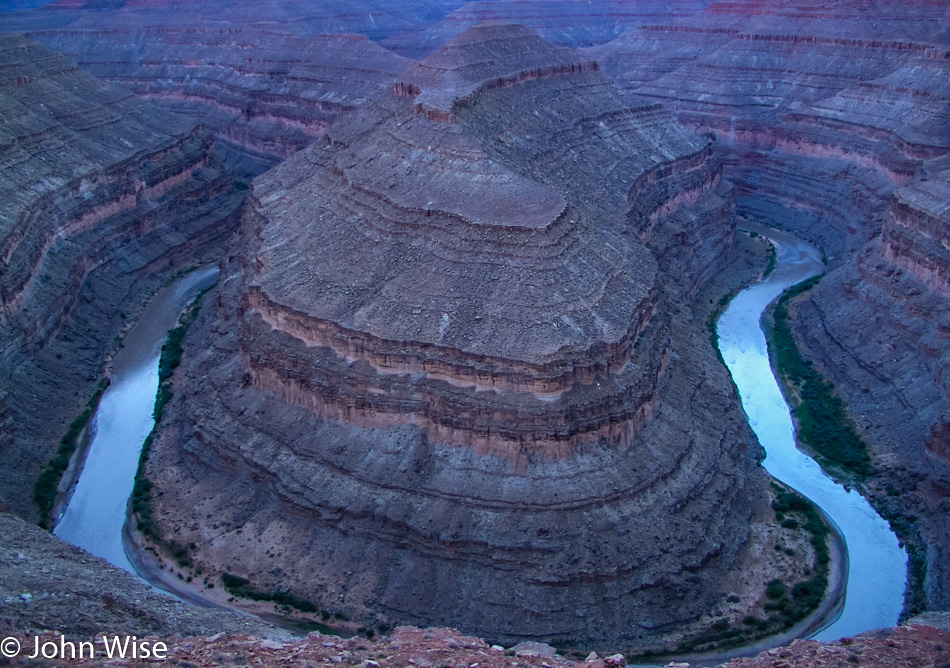
This is the “other” horseshoe. One is found down by Page, Arizona, and has the Colorado River flowing through it. This one is found in Gooseneck State Park in Utah and has the San Juan River running through it, though it ends up flowing into the Colorado River over at Lake Powell.
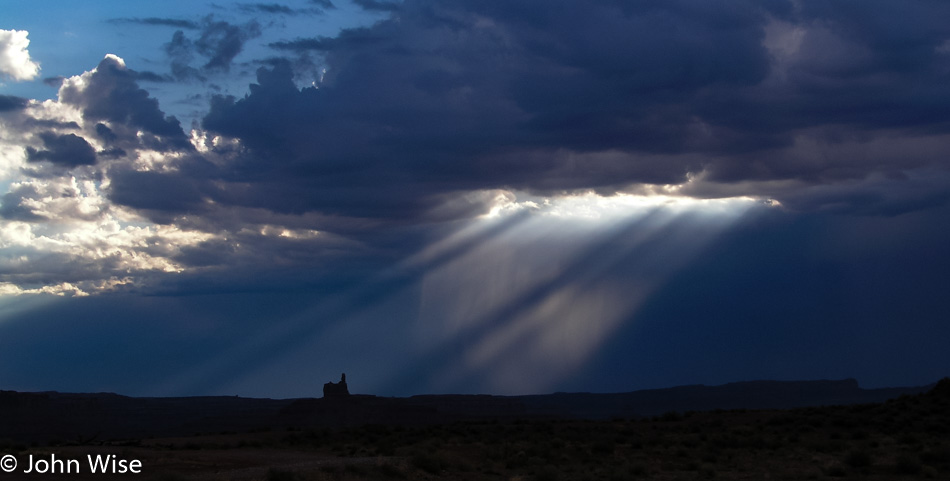
This is a brilliant example of desert skies where looking in one direction, the horizon has a foreboding gloom portending bad weather out there. A few minutes later, and looking in another direction, you get the following.

Heading up the Mokee Dugway all of a sudden, the day is perfect again with an inviting sky of fluffy clouds.
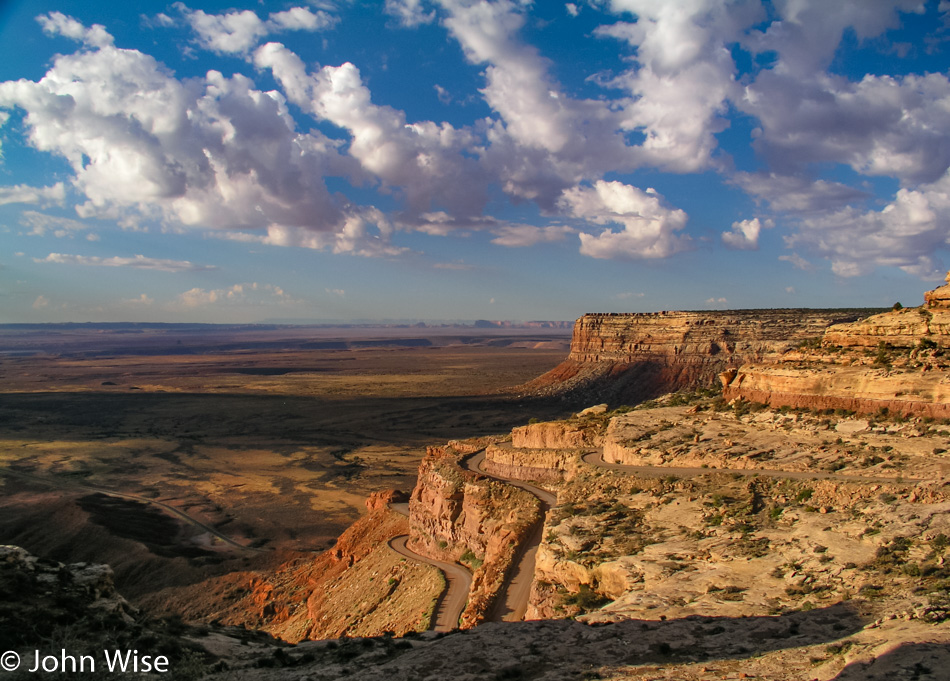
This narrow dirt road gives you a better idea of what exactly the Mokee Dugway is and why we tend to want to avoid it in bad weather.
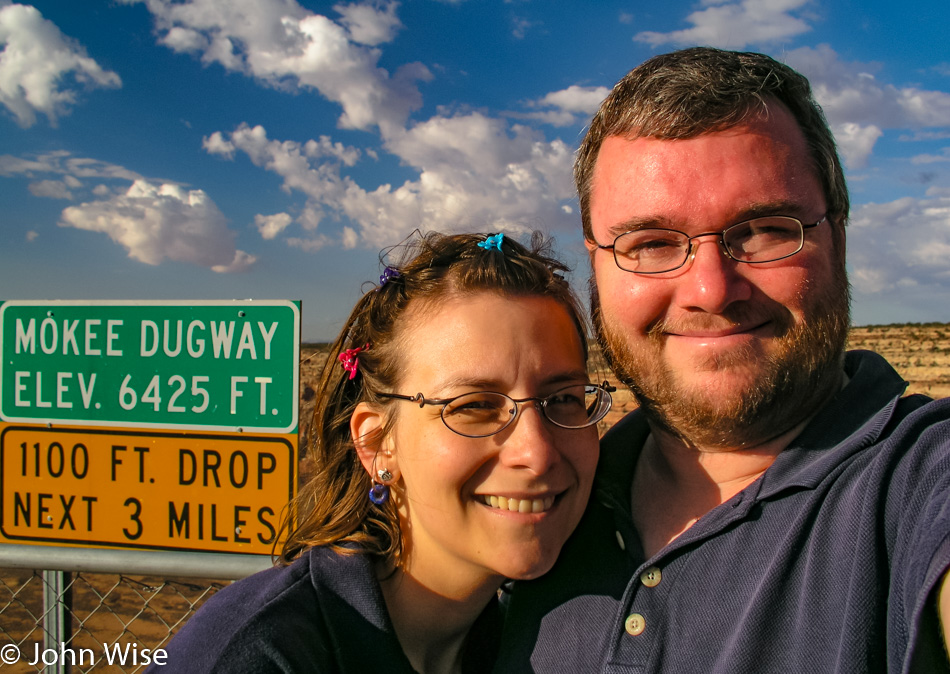
So far, the new car is a pleasure and is getting us where we want to go.
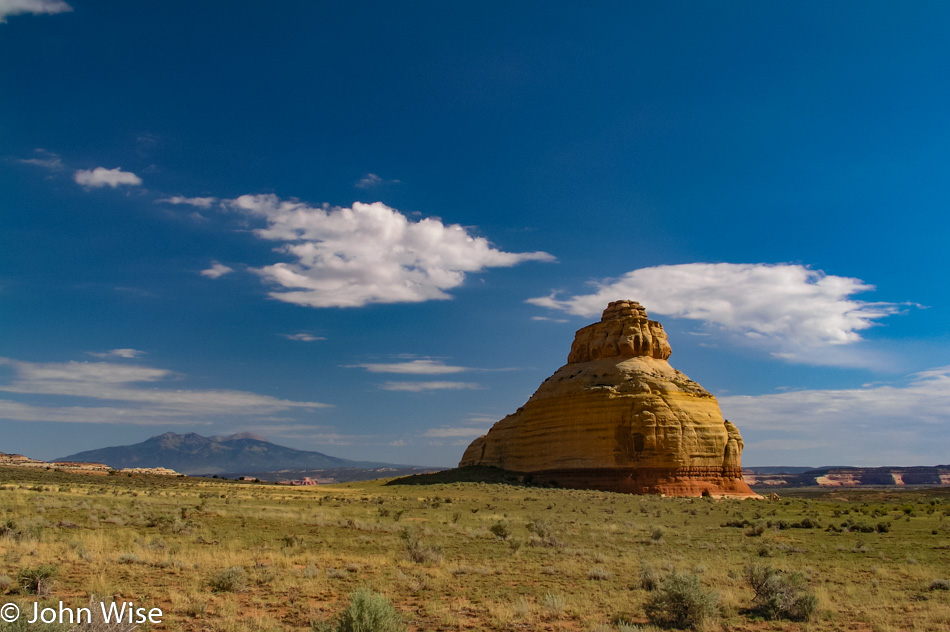
This is the kind of church Caroline and I can get into. Welcome to Church Rock near the turnoff for Canyonlands National Park.
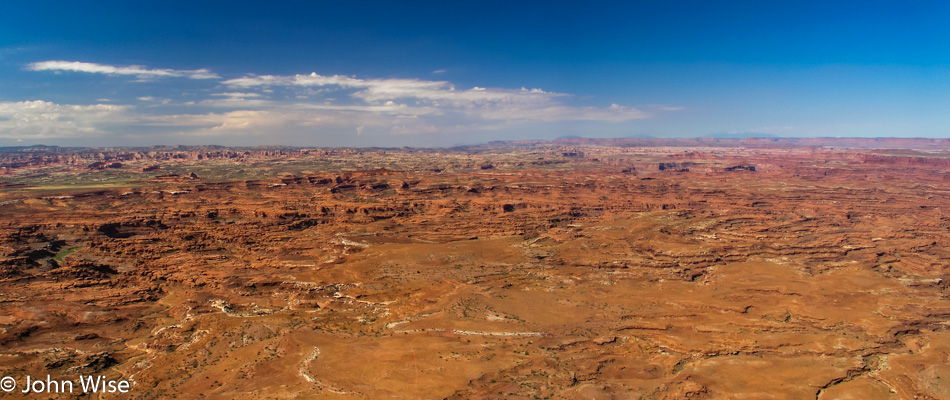
Wow, this is quite the canyon. No wonder Edward Abbey warned of careless travel in the Maze that’s somewhere out there. To be clear, this is the Needles Overlook in Canyonlands National Park, and today’s visit will not do it justice, but that’s kind of our way of having first encounters with many places in America.
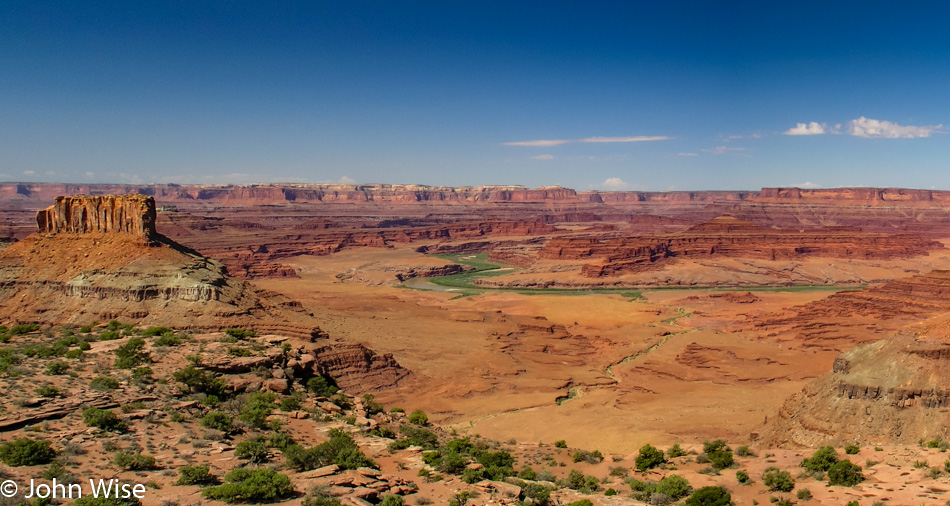
We are here at the Minor Overlook too late in the day for a giant diversion from where we are planning on staying tonight, but if we had the time and we are so very tempted to make that time, we’d hike right out to the confluence of the Green and Colorado rivers.
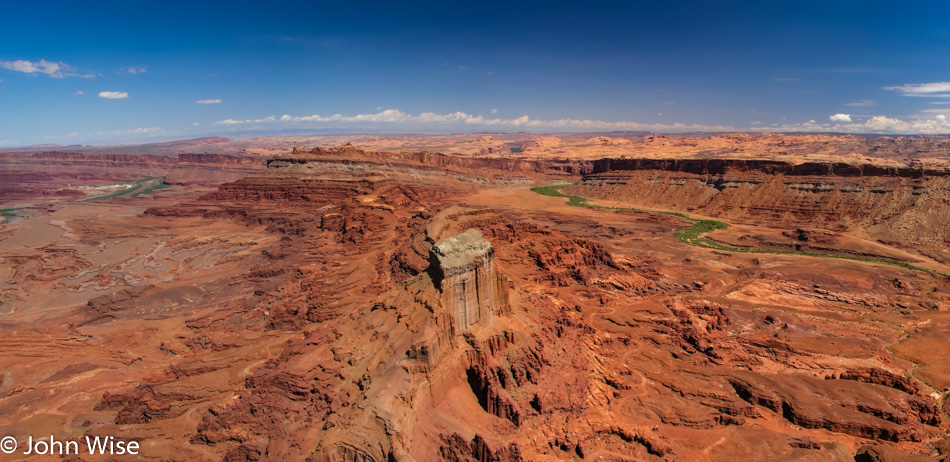
Canyonlands is certainly a relatively unknown treasure, probably because of the difficulty in visiting the place and not having very many services nearby aside from Moab further north. This particular view is from the Anticline Overlook.
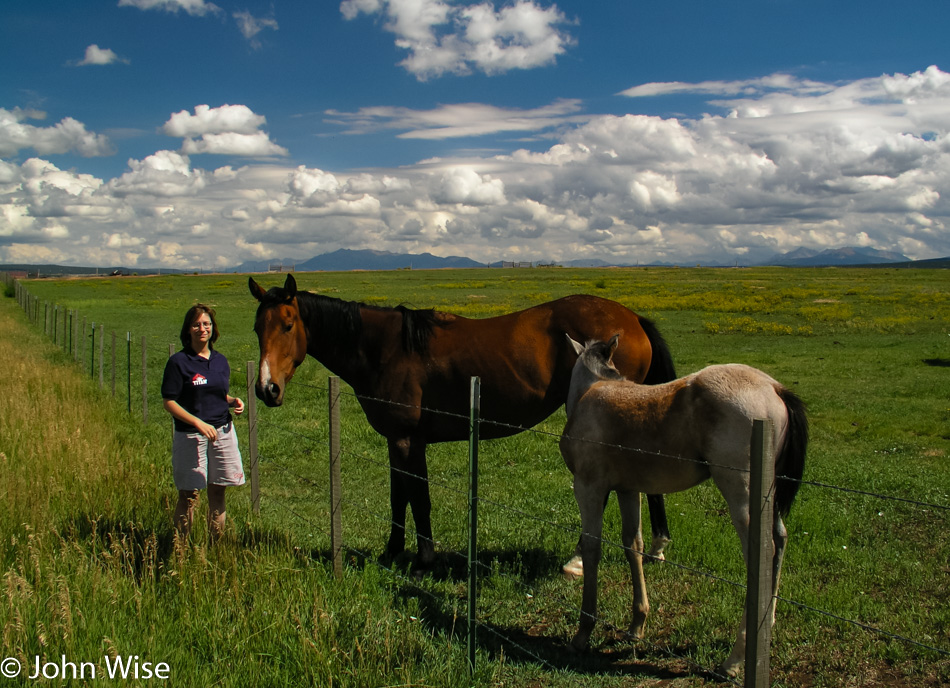
Red rock to green grass is the visual indicator that we’ve gone east and are now in Colorado.
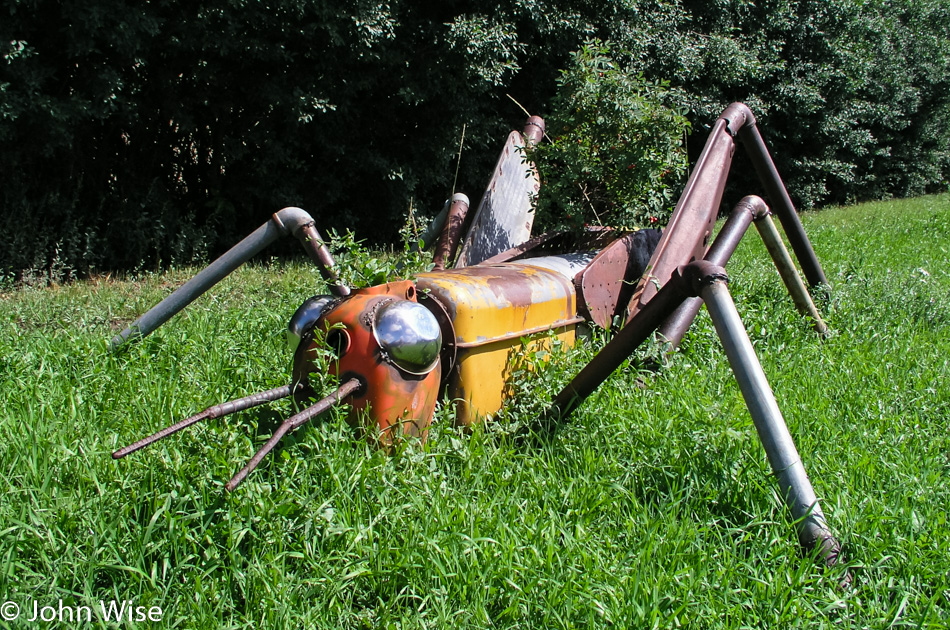
The mutant steel grasshoppers of Norwood, Colorado, are not coming to a town near you because they’ve not been robotized – yet.
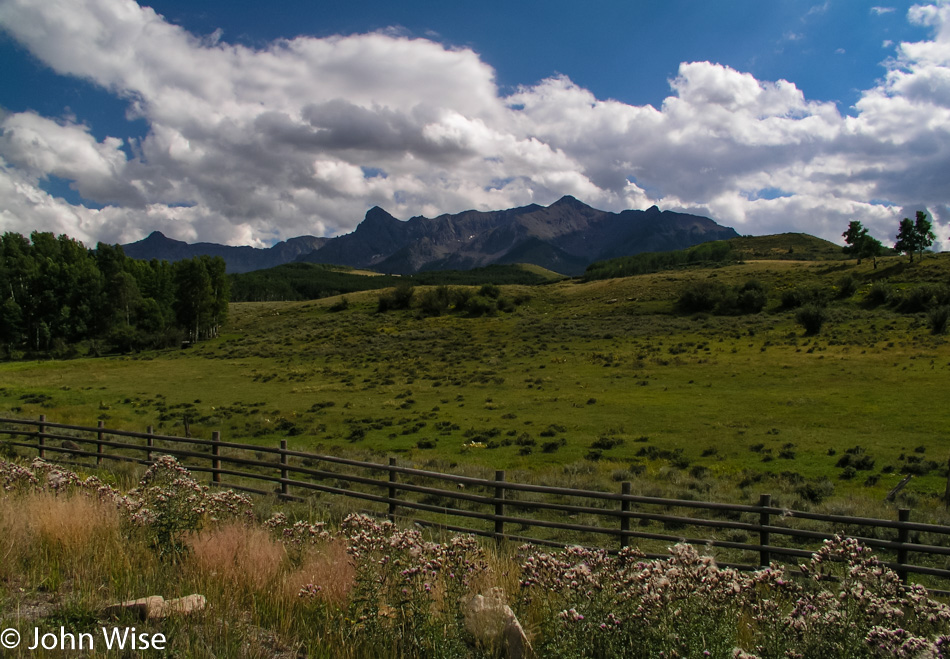
We’ve been to Ouray and Telluride on the other side of those mountains, but this is the first time on this side.
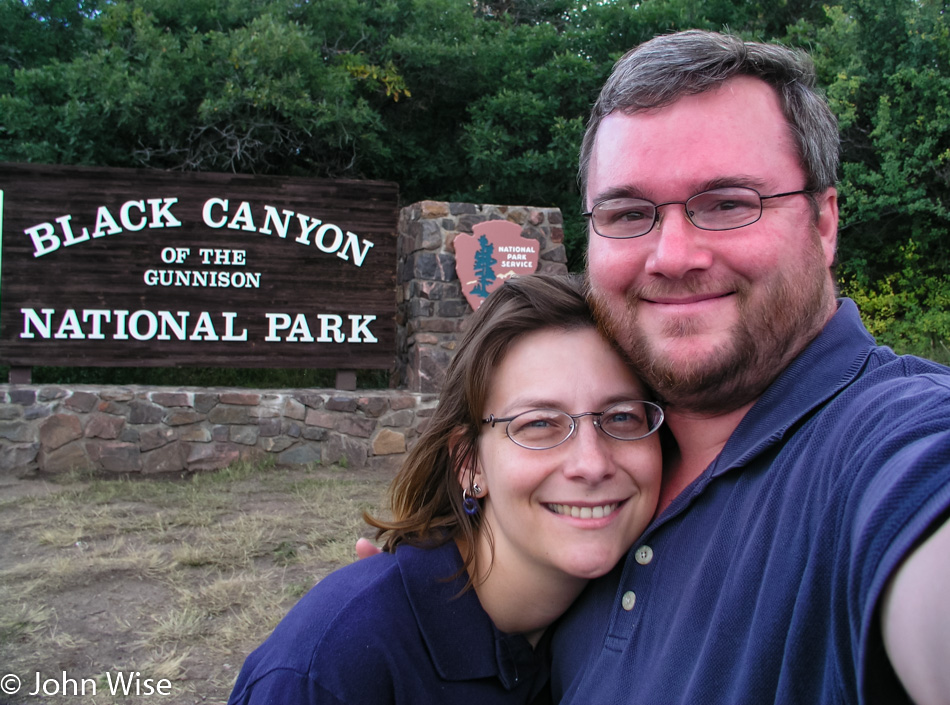
We made it. The Black Canyon of the Gunnison National Park was a bit of a mystery to us as we never heard it referenced. No one has ever told us we should visit, and I can’t think of any movies that featured it as a backdrop, such as Monument Valley which has been used many times.
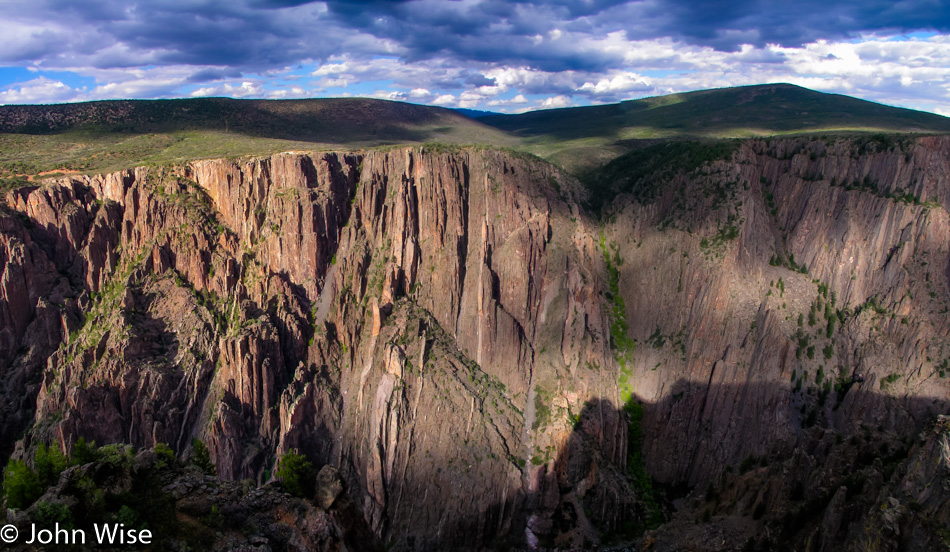
Check out all that metamorphic rock. It’s a curiosity to me that this rock that is over 1.5 billion years old and maybe as striking is the fact that we are at nearly 8,000 feet in elevation (2,400 meters), and these formerly igneous and sedimentary rocks were at one time approximately 8 miles below sea level (12.8 km). Now, here we are, gazing across the canyon at the sloping mountainside that has a gaping chasm torn into it, looking like pasture lands go right up to the edge as though this was opened yesterday.
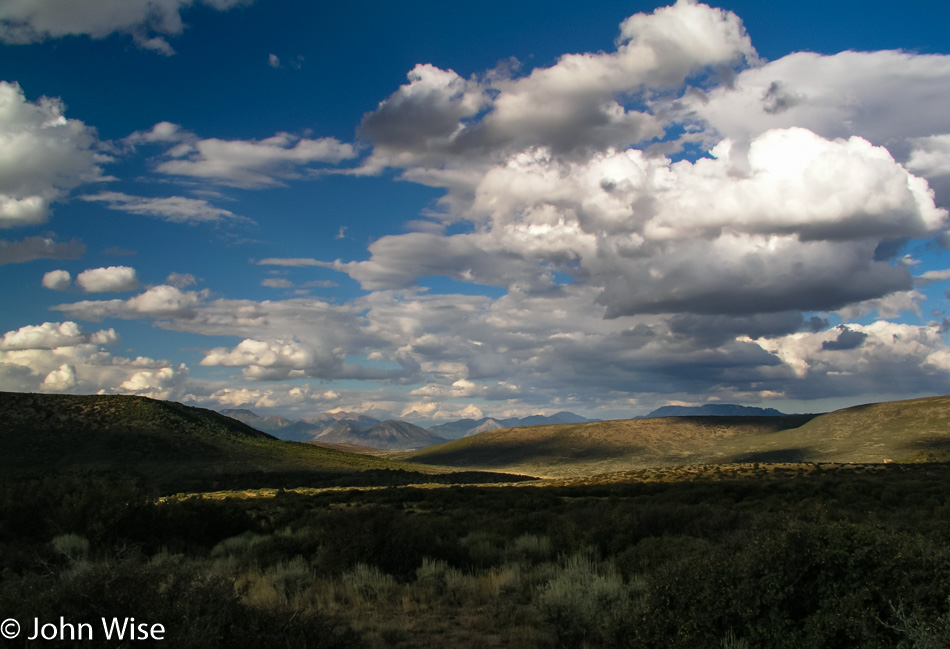
I wonder how many others, when thinking of the Rockies, picture the mountains west of Denver and consider that’s about it. We are still in the Rocky Mountains, although we are 200 miles from Denver. They continue south to the Sangre de Christo Mountains for at least another 250 miles and north towards Toad River, Canada, for another 2,179 miles.
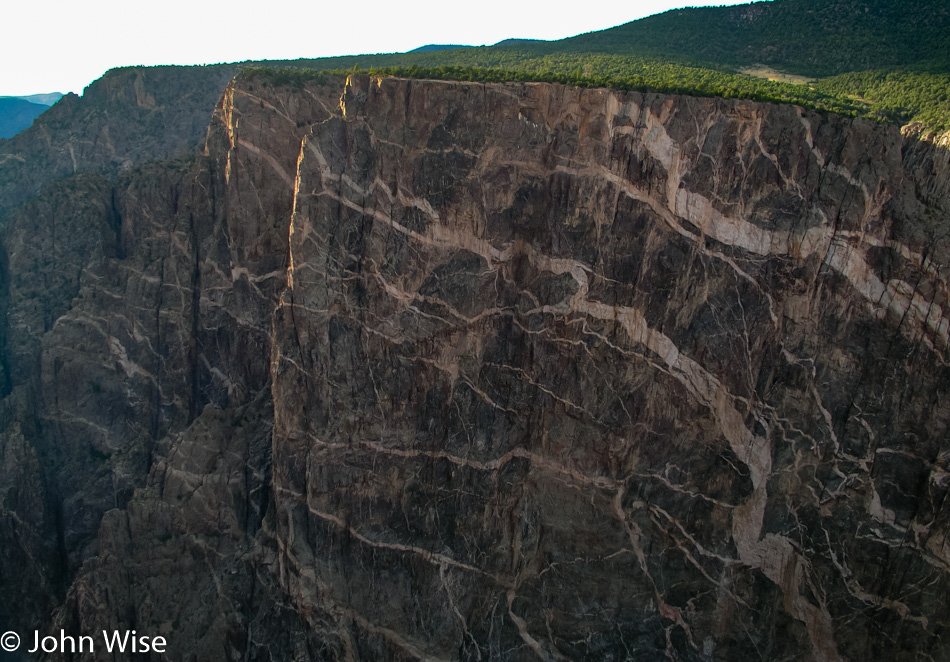
Isn’t that some nice shit? Oops, I mean gneiss and schist. Their story is a romantic entanglement that began long, long ago in a time far away. While they started life as sand, sediment, and volcanic rock, they grew up until, during their long hibernation, under great pressure, the gneiss, hot and cooking away to change its molecular structure, was not as hot and fluid as the schist that was able to flow and cut into the gneiss. Hundreds of millions of years will pass before they reappear for their unveiling as a couple forever intertwined as one until, once again, they return to the sands of time long after we depart from this world.
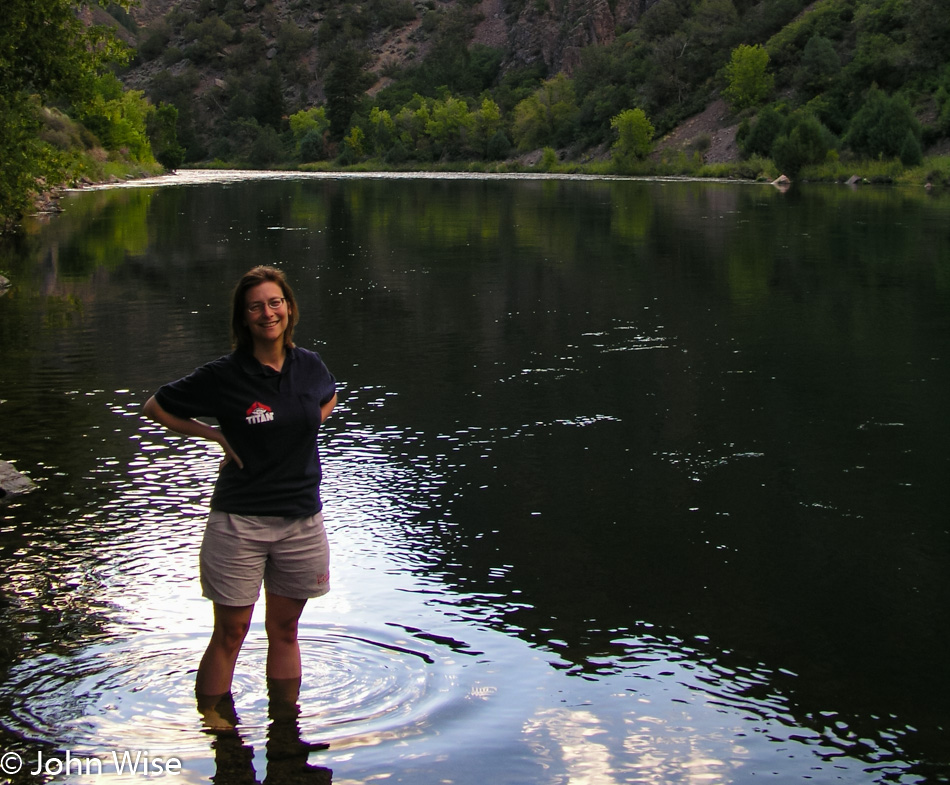
Standing in the Gunnison River because a corner of Winslow, Arizona, is not nearby.
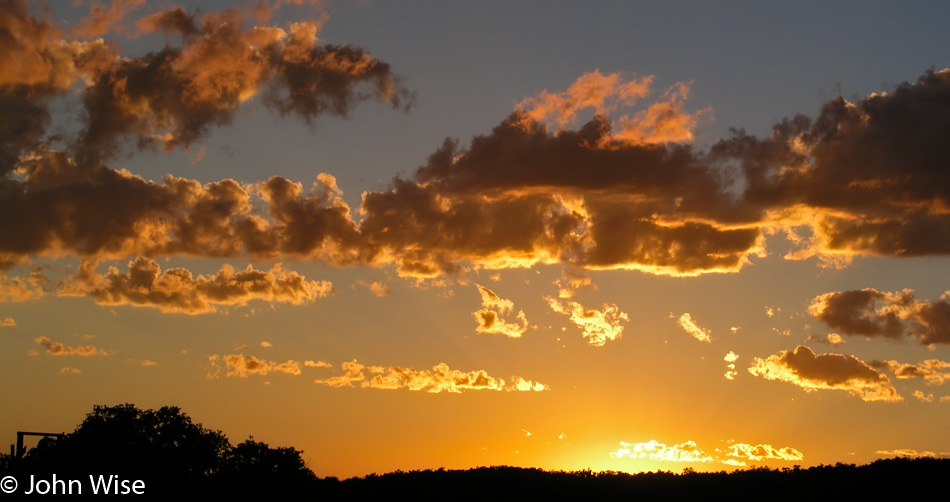
We are spending the night in Gunnison. Nothing left to report about this day, end of transmission.